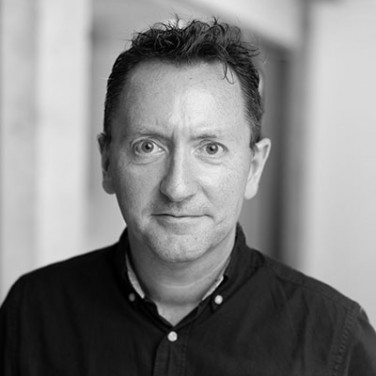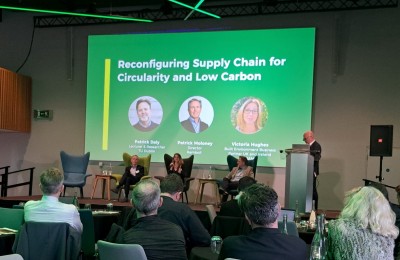Build Green Now 2024: A Green Light to guide us 09 May 2024
There has never been a more exciting and hopeful time, in terms of decarbonisation, with the recent European Council’s final adoption of the new Energy Performance of Buildings Directive (EPBD) in early April. With operational carbon already covered by Irish building regulations, the directive will now require member states to regulate the embodied carbon of buildings, amongst a host of other requirements.
This was the prelude to the “Build Green Now 2024” conference held by the Irish Green Building Council at Croke Park last Friday which I found, as always, was a fantastic opportunity to connect with fellow professionals, witness progressive research and gain clarity around current and future EU legislation.
From the networking breakouts I picked up on a few trending thoughts about how positive and welcome the adoption of the EPBD was but that there seems to be a “fluffiness” in the language involved. The pursuit of clarity was on everyone’s minds.
So what perfect timing for the “Build Green Now” conference to be held, with architects, engineers, and sustainability champions all eager to share ideas and collaborate on removing all “fluffiness” and inspiring all prior to the long-weekend.
Event Highlights: From EU Mystery to Legislative Mastery
The conference agenda offered a comprehensive overview of key topics impacting attendees emanating from EU legislation:
A Survival Guide to the New European Policy Landscape:
A straight talking session on understanding the implications of current European Legislation provided by 3 knowledgeable speakers, each with a unique perspective on the tricky subject matter.
- Seema Issar – Manager Buildings in Use/ Sustainable Finance, German Sustainable Building Council (DGNB)
- Celine Carré – Head of Public Affairs, Saint-Gobain
- Jonathan McKeown – Director of ESG, Davy Horizons
Key moments:
Celine Carré: For commercial buildings specific targets are set for renovation of the worst performing buildings: 16% by 2030 and 26% by 2033. These buildings must be mapped and identified for this to happen.
Seema Issar: EU Taxonomy: This is a dynamic tool which will become more ambitious in time.
Jonathan McKeown: The European Sustainability Reporting Standards (ESRS) disclosure topics include social equity within the Corporate Sustainability Reporting Directive (CSRD). With all the focus on environmental disclosure, these topics can be overlooked.
Measuring Whole Life Carbon:
Following on from the EPBD, countries now need to develop thresholds and regulations around whole life carbon. Whilst there exists clarity and structure for many metrics in Sustainable building design, measuring whole life carbon in Ireland does not have an agreed methodology. Stephen Barrett (IGBC) presented his work on the providing this agreed methodology through the “Upfront CO2 and Indicate” projects where real-life example projects where used as a basis of establishing a methodology. Patrycja Kochaniuk from STW Architects walked us through her own personal experience being part of this project and gave an invaluable insight into how whole life carbon can be calculated during a project.
Key moments:
Stehen Barrett: A tool is being developed that can be used with Irish projects. It will calculate all carbon, identify where the carbon hotspots are and produce a detailed report.
Patrycja Kochaniuk: 75% of all materials are straight forward but the last 25% are the time-consuming ones. This 25% can consist of small items like wall ties, relieving angles along with M+E items.
Audience Engagement:
The conference fostered a strong sense of community among attendees. Networking opportunities allowed for exchanging ideas, sharing best practices, and building relationships with like-minded professionals. The shared passion for sustainable design created a positive and collaborative atmosphere.
Audience questions posed to the panels were polite and incisive:
How do we communicate this information to people outside of the sustainable design bubble?
What to do about the existing loophole in the EU taxonomy relating to how a building definition can be manipulated to transition from “new” to “existing” after sale?
Do sustainable design requirements take the focus away from circular economy obligations?
Personal Thoughts: A Clearer Future for Sustainable Building
The Build Green Now 2024 conference left me feeling optimistic about the future of sustainable building in Ireland. The country has to now look at implementing the requirements of the EPBD and provide clear and effective guidelines, to all stakeholders, so that the commercial world can adjust and make it a reality.
Heading into the long weekend this conference did succeed in removing a lot of “fluff” for certain topics along with reigniting my confidence for a sustainable future.


